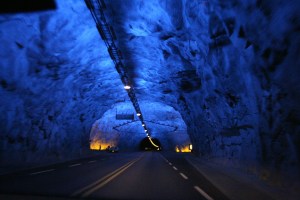 I have to admit that I am one of those annoyingly cocky cyclists. I gamble on gaps between taxis, pay scant attention to red lights and often ‘forget’ to wear safety equipment in order to avoid ‘helmet hair’ at work. I’ve cycled since I was young, I tell myself, getting into accidents is for other people. The process is as much entertainment and fashion as it is a means to getting from A to B. For example, I wouldn’t be seen dead in one of those humptious yellow vests.
I have to admit that I am one of those annoyingly cocky cyclists. I gamble on gaps between taxis, pay scant attention to red lights and often ‘forget’ to wear safety equipment in order to avoid ‘helmet hair’ at work. I’ve cycled since I was young, I tell myself, getting into accidents is for other people. The process is as much entertainment and fashion as it is a means to getting from A to B. For example, I wouldn’t be seen dead in one of those humptious yellow vests.
The ugly truth of course is that I’m more likely to soon be dead when cycling without one of those vests.
I wonder if the Edinburgh cyclist who died in Edinburgh this week thought similarly to how I do, or the other 15 cyclists who have died on the Capital’s streets since 2000. Not that complacency is the main reason for cyclists getting into accidents, it is cars, but there is precious little being done to make the roads safer for those on two wheels when up against numerous, too many, people on four wheels. The Greens, of course, are leading the arguments and are quite rightly calling for a cycle safety summit.
Perhaps Scotland should take a lead on this issue within the UK by taking a leaf out of The Netherlands’ book by implementing the following:
“Cyclists in the Netherlands are well protected as the law assumes the stronger participant (i.e. the car driver) is guilty until proved innocent (i.e. is the guilty party in all accidents involving weaker traffic unless evidence of the opposite is provided). Furthermore, drivers know to expect a high volume of cyclist traffic. Due to these issues the number of car-bike collisions with serious consequences is not alarmingly high in the Netherlandsâ€
For a Government that is often so keen to get a jump on Westminster in bringing in legislation and making Scotland a noticeably better place to live than down south, I would have thought that this was right up their cycle path.
I don’t know why lycra-clad cyclists are a target for so many drivers, metaphorically and physically. This was recently taken to extremes in Bristol when a bus driver used his vehicle as a weapon to purposefully take a cyclist out on the road (the incredible BBC video is here). That is an extreme example but if cyclists were less of a target and more of a risk to ending up in prison or having to pay a large fine if you hit one of them with your, regardless whose fault you believed it was, we would most likely see less people dying on our streets and more people dusting off their mountain bikes and enjoying the satisfaction and occasional thrill that is cycling through your home town or city.
Cyclists need to do their bit too of course, paying attention to red lights, knowing their Highway Code and having a second look at that garishly yellow high visibility jacket, but the Scottish Government can, and should, take a lead. It once considered taxing cyclists but they should go the other way and protect them by placing an assumption of guilt on the driver in any car-on-bike accident on Scotland’s roads.
After all, if it saves one life…


 The Glasgow Underground, aka the Clockwork Orange, is the third oldest subway line in the world behind London’s Underground and Budapest’s Metro. It is also fiercely popular in Glasgow, in part due to its sheer simplicity – one train goes clockwise around the numerous stops and the other goes anti-clockwise. Dead easy.
The Glasgow Underground, aka the Clockwork Orange, is the third oldest subway line in the world behind London’s Underground and Budapest’s Metro. It is also fiercely popular in Glasgow, in part due to its sheer simplicity – one train goes clockwise around the numerous stops and the other goes anti-clockwise. Dead easy.